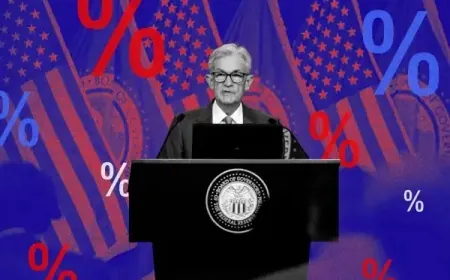Under Armour Posts Mixed Q1 Results: Earnings Beat Expectations, Sales Decline
Despite an 11% year-on-year drop in sales, Under Armour exceeded analysts' earnings expectations, signaling progress in its strategic overhaul.

Under Armour (NYSE: UAA) reported its first-quarter results for 2025, showing a revenue decline but an earnings beat. The company’s sales were $1.18 billion, which is 11.4% lower than the same period last year. Despite this, the company exceeded analysts' expectations, which had forecasted revenue of $1.17 billion.
Under Armour also posted a non-GAAP loss of -$0.08 per share, matching Wall Street’s expectations. While the overall sales picture was weak, the company showed positive signs with its adjusted EBITDA of $19.92 million, well above the expected loss of $4.15 million. This figure indicates that the company has managed to improve its operational performance despite facing declining sales.
Challenges in Revenue Growth
The company’s 11.4% drop in revenue during Q1 signals persistent difficulties in increasing demand for its products. For a brand that once held a strong market position, these results are a reminder that Under Armour faces tougher competition and changing consumer preferences. The company’s constant currency revenue, which excludes the effect of foreign exchange, also dropped by 10% year-on-year, highlighting the global nature of these challenges.
Under Armour has been working hard to reframe its strategy, focusing on refining its product offerings and distribution channels, but these results reflect the need for further adjustments to boost sales. The company’s revenue decline isn’t entirely unexpected, as the market has shifted toward athleisure and performance-driven apparel, with rival brands like Nike and Adidas continuing to expand their influence.
Declining Margins Reflect Higher Costs
The company’s operating margin decreased significantly, reaching a negative 6.1%, which is a sharp drop from last year’s margin. This decline is indicative of increased operating costs, particularly with marketing and inventory management, which couldn’t be offset by rising sales.
These challenges underscore Under Armour’s struggles to increase its profitability while adjusting to new market conditions. A higher operating loss also reflects the company’s difficulty in improving efficiency while battling costs associated with its restructuring efforts.
Strategic Adjustments and CEO Comments
Under Armour's strategic shift continues as the company aims to better position itself for future growth. Kevin Plank, the company’s President and CEO, expressed optimism about their ongoing transformation: “We’re making the necessary changes to drive long-term growth. By focusing on elevating our products, refining our distribution model, and maintaining a disciplined approach to cost management, we’re positioning Under Armour for a more profitable future.”
The company has prioritized direct-to-consumer sales as a key focus, adapting to the rise of online shopping and consumer preferences for a more digital-first experience. These efforts include investments in improving its e-commerce platforms and enhancing its brand appeal through digital marketing.
Despite facing short-term setbacks, Under Armour believes that these changes will eventually restore growth. The ongoing strategic reset focuses on improving efficiency and expanding the company’s product line, which includes innovations in athletic footwear, performance gear, and more.
Guidance for the Coming Quarter
For Q2 2025, Under Armour provided guidance of $1.13 billion in revenue, which is below the $1.17 billion forecasted by analysts. This suggests that sales will likely continue to decline for the next quarter, with the company expecting a 4.5% drop in year-on-year sales.
However, the company’s adjusted EPS guidance of $0.02 for the next quarter surpassed Wall Street’s projections of a break-even result, offering a more optimistic outlook for profitability. Even though revenue may decline, the company’s focus on cost reduction and profitability could lead to stronger earnings in the near future.
Stock Market Reaction and Analyst Expectations
Despite a challenging quarter, Under Armour's stock rose by 2.3% to $6.36 following the announcement of its earnings. Investors appear to be responding favorably to the company’s ability to beat earnings expectations and its positive EPS guidance for the next quarter.
However, the overall trend for Under Armour's stock has been downward in recent years. The company’s revenue has consistently struggled, and its operating margins have remained under pressure. Despite efforts to improve its business, many analysts believe that Under Armour’s recovery may take time, as changing consumer habits and increasing competition continue to pose challenges.
Is Under Armour a Strong Investment?
The question for many investors is whether now is the right time to invest in Under Armour. While the company has shown progress in areas like adjusted earnings, EBITDA, and its shift to direct-to-consumer sales, its ongoing revenue decline and increasing operating costs mean that long-term growth is still uncertain.
Despite positive earnings guidance for the next quarter, Under Armour’s stock performance in the past few years has been weak, and there are still concerns over the company’s ability to regain its footing in the highly competitive athletic wear market. For investors looking for growth, the decision to invest in Under Armour will depend on whether they believe the company can successfully execute its turnaround plan in the coming quarters.
Also Read: Tesla Sees Big Sales Jump in March, But First Quarter Drop Raises Concerns




























































